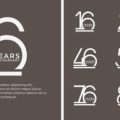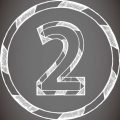Introduction to the Big Three: Sun, Moon, and Rising Signs
When it comes to Western astrology, particularly in the United States, the concept of the “Big Three”—the sun sign, moon sign, and rising (or ascendant) sign—serves as a foundational cornerstone for astrological interpretation. These three elements form the core of an individual’s astrological profile and are widely referenced in American horoscopes, pop culture, and even personal identity discussions. The sun sign is often what Americans refer to when they ask each other, “What’s your sign?”, symbolizing core identity and ego. Meanwhile, the moon sign reveals emotional tendencies and inner responses, offering insight into how one feels and processes experiences. The rising sign, on the other hand, represents first impressions and outward behavior—the mask presented to the world. Understanding these three signs is crucial for anyone delving into astrology from an American perspective, as they provide a nuanced map of personality that goes far beyond simple sun sign stereotypes. This triad has become deeply embedded in U.S. astrological practice, shaping not only individual self-reflection but also broader cultural conversations around destiny, compatibility, and personal growth.
2. Historical Roots: From Hellenistic Tradition to Modern America
The concept of Sun, Moon, and Rising signs—often called the Big Three in modern astrology—originated in the cosmopolitan world of Hellenistic Greece around the 2nd century BCE. Astrologers of that era synthesized Babylonian planetary omens and Egyptian decanic systems, giving rise to a framework where an individual’s personality was mapped through celestial positions at their birth. The Sun sign came to symbolize core identity, the Moon sign reflected emotional instincts, and the Ascendant (Rising sign) indicated outward behavior and first impressions.
As Western astrology spread through the Roman Empire and later into medieval Europe, these three pillars remained central, though often reserved for elite or scholarly circles. With the Age of Enlightenment, astrological practices declined in credibility but experienced revival during the late 19th and early 20th centuries—especially in English-speaking countries. In America, this resurgence aligned with waves of immigration and the growth of popular media.
Evolution of the Big Three Across Cultures
| Era/Culture | Key Development | Impact on Big Three |
|---|---|---|
| Hellenistic Greece | Synthesis of Babylonian & Egyptian astrology | Defined Sun (identity), Moon (emotions), Ascendant (persona) |
| Medieval Europe | Astrology tied to medicine & philosophy | Complex horoscopes reserved for scholars/nobility |
| Victorian England | Rise of popular horoscope columns | Sun sign gains mass appeal; Moon/Rising less emphasized |
| Modern America | Media democratizes astrology | Big Three become standard for personal identity analysis |
The American Integration: Astrology Meets Individualism
The migration of astrology to America coincided with a culture prizing individual expression and psychological self-awareness. By the mid-20th century, newspaper horoscopes focused almost exclusively on Sun signs for simplicity. However, as Americans sought deeper self-understanding beyond generic predictions, astrologers like Linda Goodman popularized all three components in best-selling books such as “Sun Signs” (1968). This expanded approach resonated with Americas values of personal growth, authenticity, and diversity.
Cultural Evolution Through Data and Dialogue
In recent decades, digital platforms have accelerated access to personalized birth charts, making knowledge of the Big Three widespread among millennials and Gen Z. According to Pew Research Center data from 2021, nearly 30% of U.S. adults under 30 report regular engagement with astrology content—a figure triple that of older generations. The journey from ancient Greece to modern America illustrates not just historical continuity but also ongoing cultural adaptation, blending tradition with new forms of self-exploration.
![]()
3. Pop Culture and Mainstream Appeal
Astrology’s transformation into an American mainstream fascination is inseparable from the explosive influence of pop culture, media, and the internet. In the late 20th century, sun signs began to appear in newspaper horoscopes across the country, making “What’s your sign?” a conversational ice-breaker and cultural meme. But as cable television and glossy magazines gained popularity in the 1980s and 1990s, celebrities like Madonna and Cher openly discussed their astrological profiles, turning sun, moon, and rising signs into household terms for millions of Americans.
With the rise of the internet in the early 2000s, astrology saw a digital renaissance. Astrology websites, online birth chart calculators, and viral social media memes made it easy for anyone to access detailed interpretations of their sun, moon, and rising signs—no longer limited to professional astrologers or specialized books. Platforms like Tumblr and later Instagram amplified astrology’s reach among Millennials and Gen Z, who shared posts about their signs’ personalities or compatibility with friends as a form of personal branding and self-expression.
The language of astrology became deeply embedded in American pop culture: TV hosts referenced zodiac traits during interviews; influencers dropped sign references in YouTube vlogs; dating apps included astrological filters so users could match based on cosmic compatibility. Even brands capitalized on the trend by launching zodiac-themed products from makeup palettes to scented candles. This media-driven phenomenon not only democratized astrology but also created a shared vocabulary that resonated across generations—making sun, moon, and rising signs central pillars of modern American identity exploration.
4. Psychological Insight and Personal Identity
In the United States, astrology is not merely a mystical or entertainment pursuit—it has evolved into a powerful tool for self-understanding and psychological insight. Over the decades, Americans have increasingly turned to their sun, moon, and rising signs as frameworks for exploring personal identity, emotional health, and life’s purpose. This trend aligns closely with the broader American fascination with self-help and personal growth movements that gained momentum in the late 20th century.
How Americans Use Their Big Three
Astrological interpretations in America often go beyond fortune-telling; instead, many individuals use their sun sign (core identity), moon sign (emotional nature), and rising sign (social persona) as data points in a lifelong journey of self-discovery. The following table illustrates how each element of the “Big Three” contributes to psychological insight:
| Astrological Sign | Aspect of Self | Key Questions Explored |
|---|---|---|
| Sun Sign | Core personality, conscious self | Who am I at my core? What motivates me? |
| Moon Sign | Emotional responses, inner needs | How do I process feelings? What comforts me? |
| Rising Sign | Social mask, first impressions | How do others see me? How do I approach new situations? |
The Rise of Astrological Self-Help
This personalized approach to astrology mirrors the rise of popular psychology and therapy culture in America. During the 1970s and 1980s, self-help literature surged, emphasizing introspection and self-improvement. Americans found that astrology’s language provided a unique lens to reframe challenges, validate emotions, and create actionable goals for growth—often blending traditional astrological wisdom with modern psychological theories.
Cultural Impact: Community and Individualism
The American embrace of astrology also reflects cultural values around individualism and community-building. People use their birth charts as conversation starters in social settings—from casual gatherings to support groups—creating shared spaces for vulnerability and acceptance. At the same time, astrology empowers individuals to claim agency over their narratives by understanding inherent strengths and potential pitfalls indicated by their signs.
The Data-Driven Shift
With technology making personalized chart calculations widely accessible, apps and websites now offer detailed breakdowns of sun, moon, and rising influences. This data-driven approach appeals to Americans’ desire for quantifiable self-insight—a hallmark of contemporary personal development culture. In sum, astrology’s integration into American life is deeply tied to ongoing quests for meaning, authenticity, and psychological well-being.
5. Scientific Skepticism vs. Cultural Enthusiasm
Astrology’s role in American society has long been a battleground between scientific skepticism and cultural enthusiasm. Despite the popularity of Sun, Moon, and Rising signs, astrology faces persistent criticism from the scientific community. Institutions like the American Astronomical Society and prominent skeptics frequently highlight the lack of empirical evidence supporting astrological claims. They point out that personality traits linked to birth charts have not been validated through controlled studies, and any correlation between astrological predictions and real-world events often falls within statistical randomness.
The Devoted Fanbase: Who Believes?
Yet, demographic data tells another story—one marked by generational and social divides. According to a 2022 Pew Research Center survey, roughly 29% of American adults say they believe in astrology, with belief strongest among Millennials and Gen Z. Women are more likely than men to consult horoscopes or birth chart readings, and interest is especially high among urban populations. This growing fanbase often frames astrology less as hard science and more as a tool for self-reflection or cultural identity, particularly in diverse communities where tradition intersects with New Age spirituality.
Science vs. Subjective Experience
The debate ultimately hinges on different definitions of truth. For skeptics, the absence of repeatable results relegates astrology to the realm of pseudoscience. For enthusiasts, however, the personal resonance found in Sun, Moon, and Rising sign interpretations can feel both meaningful and validating—regardless of academic critique. This split is reflected in the rise of astrology apps like Co–Star and The Pattern, which boast millions of downloads despite disclaimers about entertainment purposes only.
Cultural Relevance in Modern America
In today’s America, astrology’s appeal seems less about literal fate and more about navigating uncertainty. During periods of societal upheaval—such as political turbulence or the COVID-19 pandemic—astrology usage spikes across all demographics. While critics argue this reflects escapism or cognitive bias, supporters counter that astrology offers language for discussing emotions and relationships when traditional institutions fall short.
Ultimately, the tug-of-war between scientific skepticism and cultural enthusiasm keeps astrology at the forefront of American popular culture—a phenomenon shaped by data-driven trends as much as ancient tradition.
6. Current Trends and the Digital Age
In recent years, astrology has experienced a dynamic resurgence across the United States, particularly among Millennials and Gen Z. This revival is deeply intertwined with American digital culture, as platforms like Instagram, TikTok, Twitter, and YouTube have become hubs for astrological content. The accessibility of birth chart calculators and meme-driven interpretations of Sun, Moon, and Rising signs have made astrological language a common part of everyday conversation—often used to explain personality quirks or relationship compatibility.
The Influence of Social Media
Social media’s bite-sized format lends itself perfectly to the quick dissemination of astrological wisdom. American users frequently share daily horoscopes, zodiac memes, and short videos dissecting the significance of their “Big Three” (Sun, Moon, Rising) in ways that are both entertaining and educational. Influencers and content creators with millions of followers provide personalized readings or comment on celebrity charts, making astrology approachable—even for those who have never read an astrological book.
Astrology as Identity and Community
The current trend also reflects a broader cultural shift towards individualism and self-exploration in the U.S. Young Americans use astrology to build their personal brands online and connect with like-minded individuals who share similar placements or cosmic experiences. Hashtags like #astrologytiktok or #zodiacmemes foster virtual communities where users exchange advice, humor, and even support during challenging planetary transits.
Data-Driven Insights Meet Ancient Wisdom
Interestingly, this digital boom has invited more analytical approaches to astrology. Apps such as Co–Star and The Pattern use data-driven algorithms to generate hyper-personalized horoscopes based on precise birth data—blending ancient interpretive techniques with cutting-edge technology. This fusion appeals to America’s pragmatic side while still offering the intuitive richness of traditional Western astrology.
Overall, the digital age has transformed how Americans engage with Sun, Moon, and Rising signs—from private consultations to public discourse. As astrological language becomes further embedded in social interactions and identity expression online, its role in American culture continues to evolve—bridging past traditions with contemporary modes of self-understanding.


